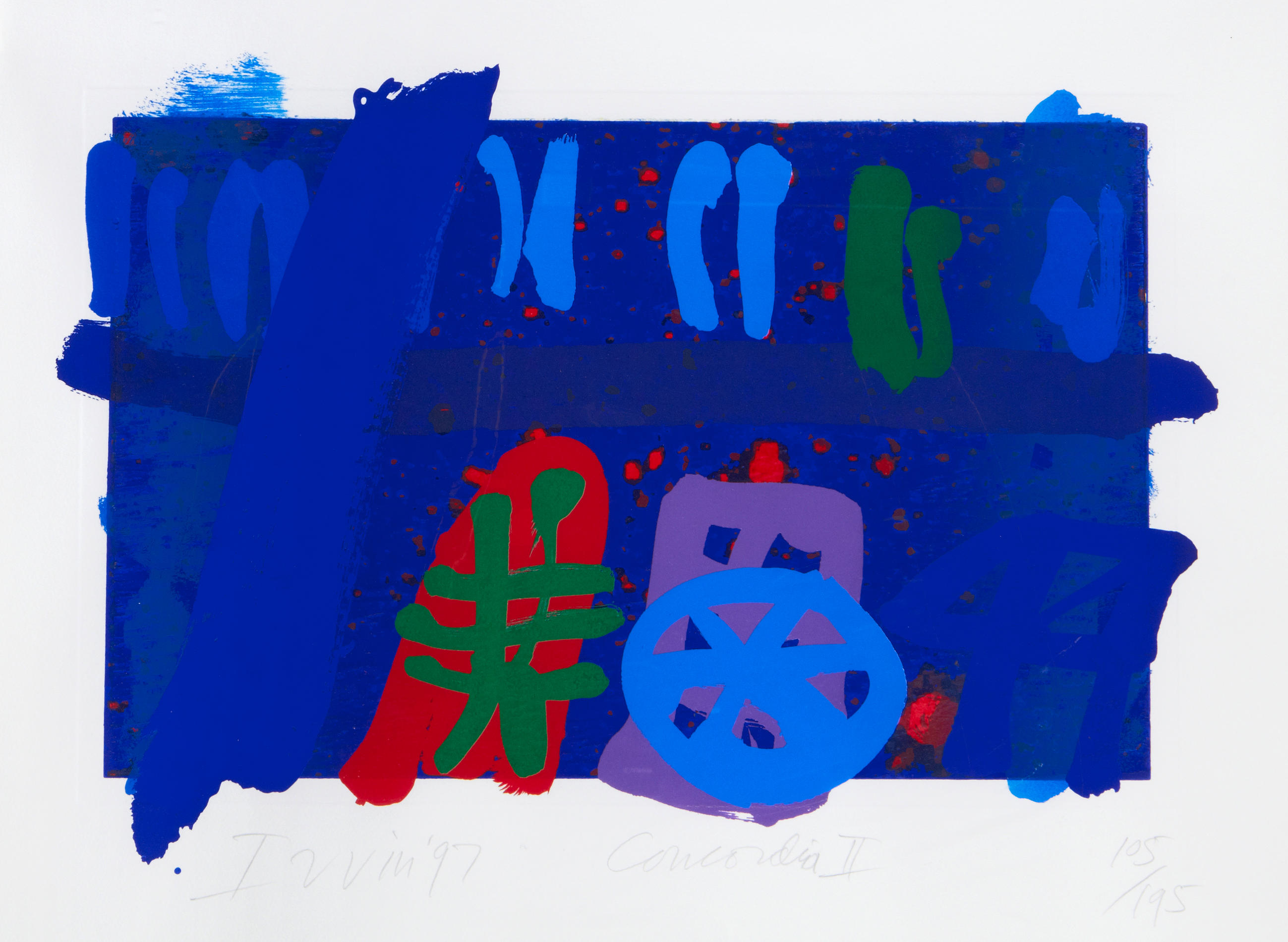This post looks at how long buried memories can resurface and trigger creative inspiration.
Albert Irvin
Back in December 2018, I went to an outstanding exhibition at the Royal West of England Academy in Bristol, Albert Irvin and Abstract Impressionism.
In 1959, Irvin visited an exhibition called The New American Painting at Tate, curated by MOMA New York and toured to eight European cities. It brought the boldest and best new artistic talent from across the Atlantic to London. The exhibition redefined what was possible for a generation of British artists.
For Irvin, it was an epiphany.
Albert Irvin and Abstract Expressionism will bring together works by Irvin and the major abstract expressionist artists that inspired him, including Jackson Pollock, Willem de Kooning, Robert Motherwell, Barnett Newman, Sam Francis and Adolph Gottlieb from UK collections and works by Grace Hartigan and Jack Tworkov on loan from the USA, giving a unique chance to see so many of these important artists’ works in this country.
RWA website
Gateshead and public art
I had come across Irvin before, sometime in the late 1980s. I was still working as a planner then, in Gateshead, with responsibility for the Town Centre. One area I was working on was improvement of the physical environment of the centre. One of the projects I identified was a dismal and uninviting roadway under a railway bridge. This underpass led from a housing estate on the opposite side of the railway line to the town centre.
My idea was to line the underside of the bridge with vitreous enamel panels. Many stations on the recently opened Tyne and Wear Metro system used this system. The photo, of Jesmond Station in Newcastle, shows one example, with artwork by Simon Butler from 1983. Making these involves screen printing the image onto the surface before firing. The panels were robust and resistant to damage. In an unsupervised location like this one, they would have been ideal.

This is where Albert Irvin comes in. I had already had contact with the Regional Arts Association, (Northern Arts), through a minor involvement in Gateshead’s Public Art Programme. I approached them again for advice on a suitable artist. The artist they suggested was Irvin. Sadly, I never saw his work in the flesh, only some murky colour transparencies in a hand held viewer. Even more sadly for me, the project never secured funding and soon afterwards I moved to Wiltshire. Looking at Google Maps, it seems that the bridge has now been rebuilt with a rather pedestrian tiled wall. The link shows the view in 2021.
https://goo.gl/maps/kPfKeS8dQYo6Wj5MA
Since then, I’ve only been back to the Town Centre once, when I photographed the soon-to-be demolished multi-storey, ‘Get Carter’ car park. The housing estate had gone, only partly redeveloped, largely with the usual mixture of sheds found anywhere.







Memories
I had forgotten much of this until I went to the show. Nothing I saw reminded me of those murky slides, but something triggered the memories, and they came flooding back. The comparison between the superb paintings and the tiny 35 mm slides, though, was dramatic. I was, I must admit, unimpressed by the slides, so the paintings in the show had a huge impact on me. I must have sat in front of Almada, for instance, for a good half an hour, mentally disentangling the layers, trying to work out the way they had been built up.

Another painting, Kestrel, looks much simpler, but that simplicity is deceptive. In this case how it was made is irrelevant, all that really matters are the colours, which simply sing out.

It was via this exhibition that I became aware of Irvin’s screen prints. I was lucky to see them, since they were only displayed up to Christmas. Printmaking seems always to have been an important part of Irvin’s creative practice. For me, they captured just how well he handled colour. It is to them, too, that I return for inspiration, in the form of the catalogue of his prints published in 2010 by Lund Humphries. The way he worked is well described in the book, and also seen in this YouTube video.
Irvin and screen printing
The two prints below are striking examples of his exuberant approach to colour and also capture some of the recurring motifs he uses – starbursts, quatrefoils and mock Chinese characters abound.


I’ll come back to all this in another post, looking at the way I think these and other influences have worked their way into my own work.